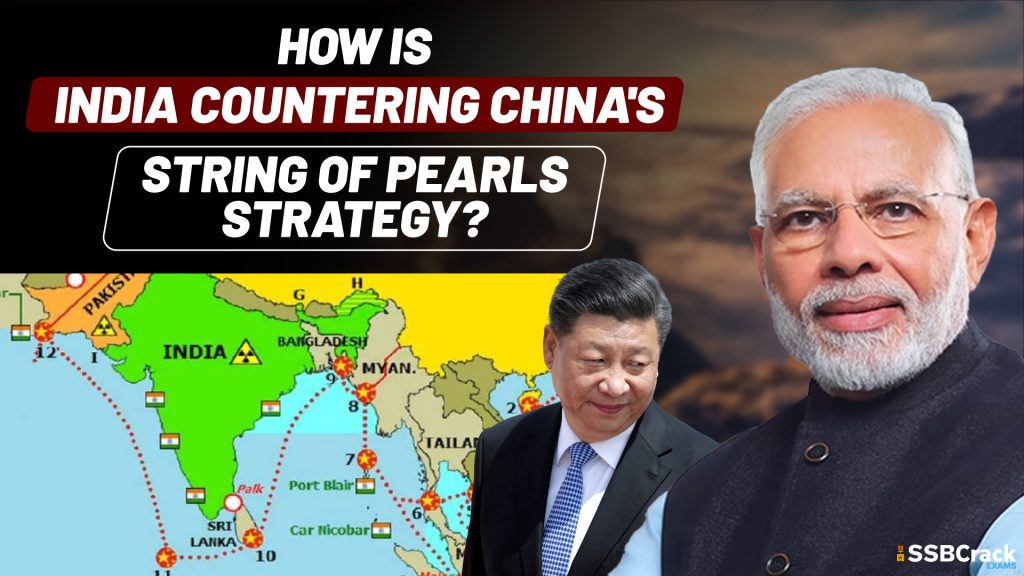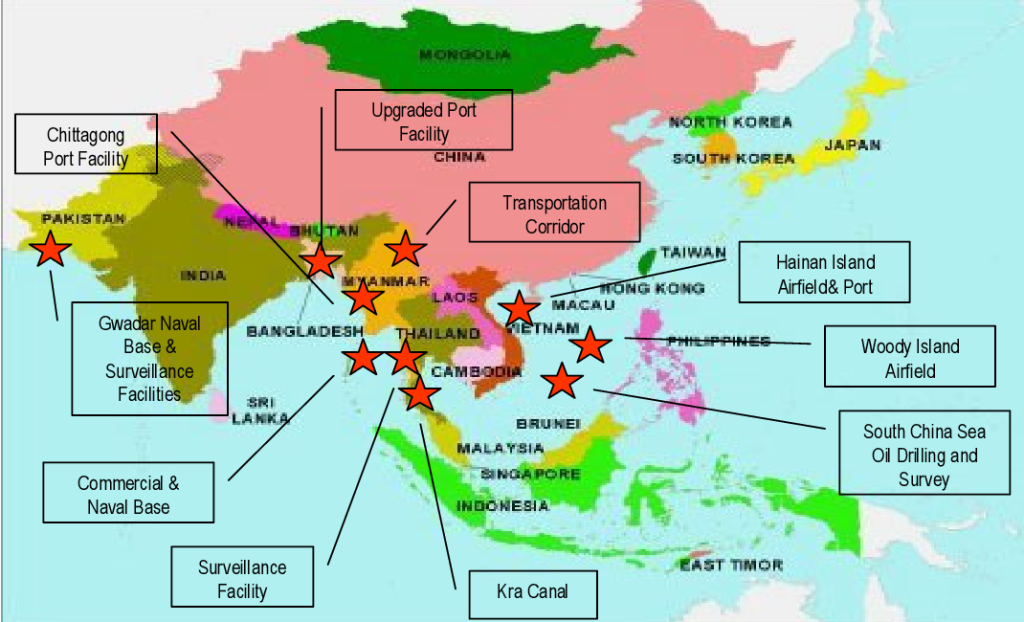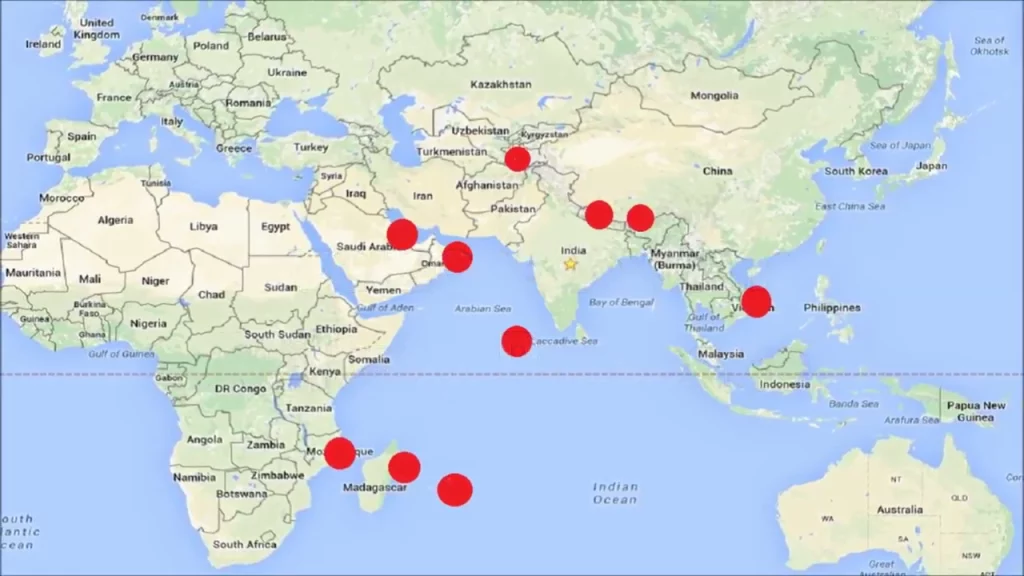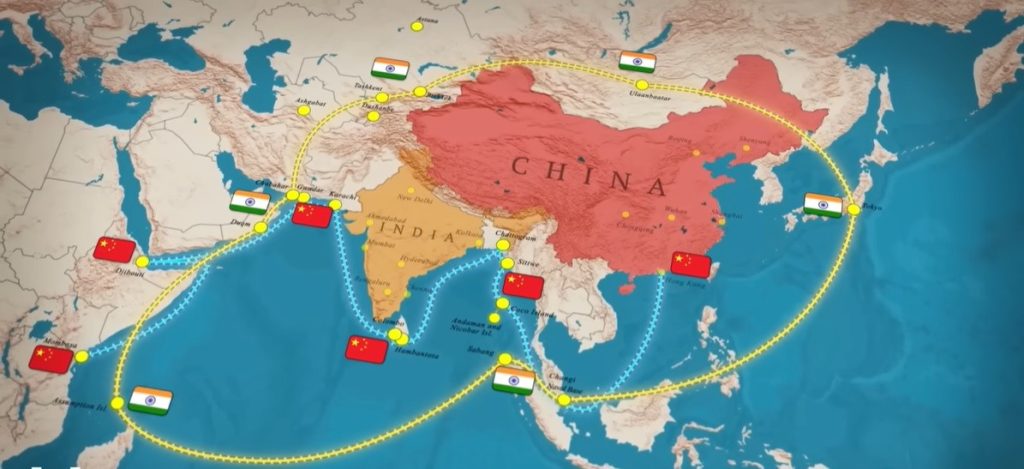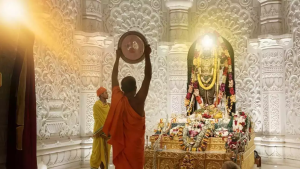We all have heard about a term called String of Pearls. In SSB Interviews, various tasks are related to General Knowledge, for example, Lecturette, Group Discussion and Interviews. We all face something very near to China in every SSB, due to the reason that China is always on the news due to its political, military, and economic power. In this article, we will learn about China’s String of Pearls and how is India Countering it.
String of Pearls
The String of Pearls is a network of military and commercial bases strategy developed by China where all the commercial and military bases will be built in many countries. This strategy mainly protects China’s trade interests as the majority of its trade passes through the Indian Ocean and through some chokepoints like the Strait of Hormuz, the Strait of Malacca, and the Lombok Strait.
What is India’s Counter against China’s SOP?
India is building a multi-pronged strategy to counter China which involves the building of various ports, extensive coastal Surveillance Radar (CSR) systems to track Chinese Warships and Submarines, importing surveillance planes which can be sued to track Chinese vessels, submarines, warships, and Chinese operational airport. Other than military buildups, India is also focusing on deepening ties with other South Asian countries in diplomatic ways. Building bilateral relations, and carrying out military exercises is also an important priority of India.
Other Important Actions taken by India to Counter China and its navy are:
Military and naval relationships
In order to equip and train its navy, India has formed a strategic naval cooperation with Myanmar, giving India a greater presence in the region. It has also signed military cooperation agreements in the region with Japan, Australia, and the United States. The four countries are known as the ‘Quad’ and conduct combined military exercises in the IOR region.
India’s Act East Policy
This Policy was launched to integrate India’s Economy with South Asian Nations. This policy is being used to make important and strategic agreements in military and diplomatic relations. Countries like Vietnam, Japan, South Korea, the Philippines, South Korea, Singapore, Indonesia, and Thailand are helping India to counter China.
Building & Accessing Ports
- India is developing the Chabahar port in Iran, which will create a new land-sea link to Central Asian countries that will bypass Pakistan. It is strategically placed in Pakistan near the Chinese Gwadar Port and the Strait of Hormuz. Chhabahar affords India a strategic advantage because it overlooks the Gulf of Oman, a vital oil supply route.
- Indonesia – India is constructing a deep-sea port in Indonesia called Sabang. It is strategically important due to its proximity to the Malacca Strait and India’s Andaman and Nicobar Islands.
- In 2016, Myanmar and India constructed a deep-water port in Sittwe.
- Bangladesh – India assisted Bangladesh in modernising the Mongla Sea Port. India can also utilise the port of Chittagong.
- Oman – India has inked arrangements to gain access to important naval installations in Oman. This facility is near to the Hormuz Strait. The Strait of Hormuz handles more than 30% of all oil shipments.
- Singapore – India has struck a deal to gain access to Singapore’s Changi Naval Base, which is strategically placed near the Malacca Strait.
Building Coastal Radar Networks
India will build ten coastal radar systems in the Maldives. These radars will transmit live photos, videos, and location data of ships travelling across the Indian Ocean. Bharat Electronics Limited (BEL) is in charge of carrying out the project. As of 2019, seven have been completed; there have been some snags in the project due to the Maldives’ government. The initiative has reached full steam after the election of a pro-India government.
- Sri Lanka – In Sri Lanka, six Coastal Surveillance Radars (CSR) have been installed. According to various estimates, India intends to establish at least ten additional CSR in Sri Lanka. The governments of India and Sri Lanka are always working to strengthen the relationship.
- Mauritius – 8 Coastal Surveillance Radars have been installed in Mauritius.
- Seychelles – 1 Coastal Surveillance Radar (CSR) have been Installed in Seychelles. The 1st Coastal Surveillance Radar in Seychelles became operational in 2015. It was commissioned on the main island of Mahe. More Coastal Surveillance Radar will be installed on the small islands of Astove, Assumption and Farquhar. There are plans for 32 more Coastal Surveillance Radar Systems in Seychelles.
- India – BEL had set up 46 Coastal Radar stations and 16 command and control systems in 2015 in India. In the next phase, 38 more Coastal Radar stations and 5 command and control systems will be set up.
- Building ports in collaboration and signing bilateral agreements with countries is usually to improve trade ties with the respective countries and open different trade routes for India. It helps India to counter the Chinese influence in these countries.
Necklace of Diamonds
In response, India has begun developing the ‘Necklace of Diamonds’ plan. This strategy intends to garland China or to put it another way, it is a counter-encirclement strategy. To counter China’s objectives, India is extending its naval bases and building relations with strategically located countries.
To crack the SSB Interview, You can join our SSB interview live classes batch and we recommend you to Enroll SSB INTERVIEW ONLINE COURSE. Trusted by thousands of defence aspirants.
Also read:
- This Is How India Checkmates China’s Circle Of Threat In The South Asian Region
- Why Is India-ASEAN War Game AIME Important For India Against China?
- What Is China’s New Look South Policy Against India?
- ASEAN AIME Naval Drill: Indian Eyes On China
- Indian Army To Raise New Units To Counter China, Pak In Cyber Warfare
- China Advancing Air Surveillance Radars Near Indian Border


